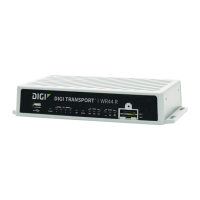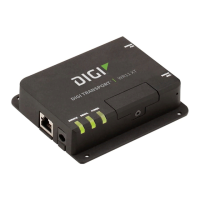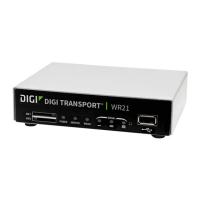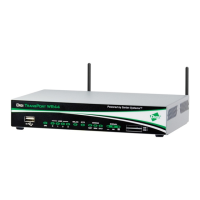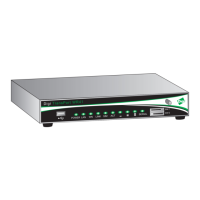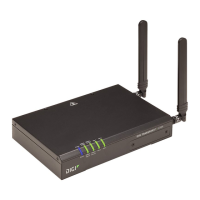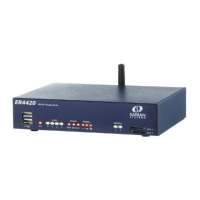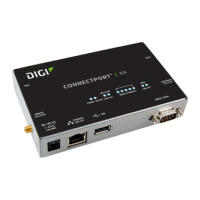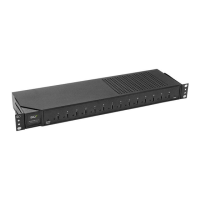Configure DialServ interfaces
Digi TransPort User Guide 260
Secondary DNS server
The IP address of the secondary DNS server to use if one is not automatically assigned by the
remote peer.
Attempt to assign the following IP configuration to remote devices
When enabled, displays the following four configuration parameters that control how the PPP
instance assigns an IP address to a connecting remote peer. The primary and secondary DNS
server addresses will also be sent to the remote peer
Assign remote IP addresses from a.b.c.d to a.b.c.d
The IP addresses in these text boxes define the pool of IP addresses to assign to remote peers
during the IP protocol configuration phase of the PPP negotiation process.
Primary DNS server
The IP address of the primary DNS server the remote peer should use when making DNS
requests over the link.
Secondary DNS server
The IP address of the secondary DNS server that the remote peer should use when making
DNS requests, should the primary server be unavailable.
Allow the PPP interface to answer incoming calls
When enabled, causes the PPP instance to answer an incoming call.
Only allow calling numbers ending with n
When the router is set to answer calls, this setting provides a filter for ISDN sub-addresses.
This value is blank by default but when the PPP instance is set to answer calls, only numbers
having trailing digits that match the sub-address value in this test will be answered. For
example, if this value is set to 123, only calls from numbers with trailing digits that match this
value will be answered; for example, 01942 605123.
Enable NAT on this interface
When enabled, enables Network Address Translation to operate on this interface. This is the
same as for other PPP interfaces.
IP address/IP address and Port
Select whether IP address translation only should be applied or whether port number
translation should also be applied to IP packets.
Enable IPsec on this interface
When enabled, causes the router to encrypt traffic on this interface using the IPsec protocol.
The following two additional configuration parameters are revealed when this box is checked.
Keep Security Associations (SAs) when this PSTN interface is disconnected
When enabled, causes the router to maintain (such as not flush) the SA when the interface
becomes disconnected. The normal behavior is to remove the SAs when the interface
becomes disconnected.
Use interface x,y for the source IP address of IPsec packets
If it is required to use another interface (such as not the interface currently being configured)
as the source address for IPsec packets, this may be achieved by selecting the desired
interface from the drop-down list and typing the desired interface instance number into the
adjacent text box.
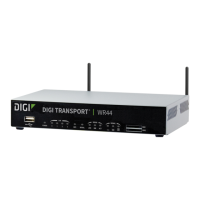
